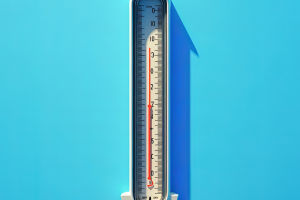The Moon's movements have long captivated humans, and understanding its timing is essential for numerous scientific applications.
Scientists employ advanced methods to precisely "time" the Moon's cycles, phases, and orbit, allowing us to predict lunar events and understand the Moon's influence on Earth.
This article explores how scientists measure and predict the Moon's movements—known as lunar timing—and why it's essential for science and navigation.
The Moon's cycle, or synodic month, is about 29.5 days, the time needed for the Moon to progress through its phases, from new moon to full moon and back.
Although this may seem straightforward, the Moon's orbit is influenced by Earth's tilt, the gravitational pull of the Sun, and the elliptical shape of its path around Earth. These factors cause slight variations in the lunar orbit that scientists consider in their precise lunar timing.
To accurately predict phases, scientists use complex astronomical calculations, factoring in the gravitational interactions between Earth, the Moon, and the Sun. These calculations, grounded in physics and mathematics, allow precise predictions of lunar phases, like full moons, down to the exact minute.
One essential aspect of lunar timing is understanding the Moon's gravitational influence on Earth's tides. As the Moon orbits Earth, it exerts a gravitational pull on the oceans, creating high and low tides in a roughly 12-hour cycle.
By studying tidal patterns, scientists can gauge the Moon's position and detect any slight changes in its distance from Earth.
This gravitational interaction also affects Earth's rotation, gradually slowing it down due to tidal friction. Over time, this phenomenon is pushing the Moon away from Earth at about 3.8 centimeters per year.
Observing these slight changes helps scientists understand long-term lunar timing and the Moon's impact on Earth's rotation.
One of the most advanced techniques for timing the Moon is lunar laser ranging. This method uses reflectors left on the Moon by Apollo astronauts.
Scientists on Earth fire lasers at these mirrors and measure how long the beams take to return, allowing for highly accurate measurements of the distance between Earth and the Moon—within millimeters.
This precision reveals details about the Moon's orbit, distance, and variations over time.
Lunar laser ranging has confirmed the gradual drifting of the Moon away from Earth, providing valuable insights into Earth's geological history and offering clues about the Moon's future relationship with our planet.
The Moon's timing also affects various natural phenomena, from animal migrations to plant cycles and even human behavior. By tracking these cycles, scientists study the Moon's subtle impact on Earth's ecosystems.
Additionally, the timing of lunar and solar eclipses, which depend on the precise alignment of the Moon, Earth, and Sun, provides data to refine lunar models.
Understanding the Moon's timing is vital for fields like astronomy, climate science, and navigation. Accurate lunar timing helps scientists track celestial events, enhances navigation systems that rely on astronomical coordinates, and even reveals insights into Earth's history.
Changes in the Moon's orbit can inform scientists about Earth's past climate and sea level changes, enriching our understanding of planetary evolution.
"Timing" the Moon involves intricate measurements to track its orbit, phases, and impact on Earth. From tidal studies to lunar laser ranging, scientists have developed methods to monitor the Moon's movements precisely.
These efforts deepen our understanding of the Moon's role in our world and illuminate the interconnectedness of Earth and its closest celestial neighbor.


